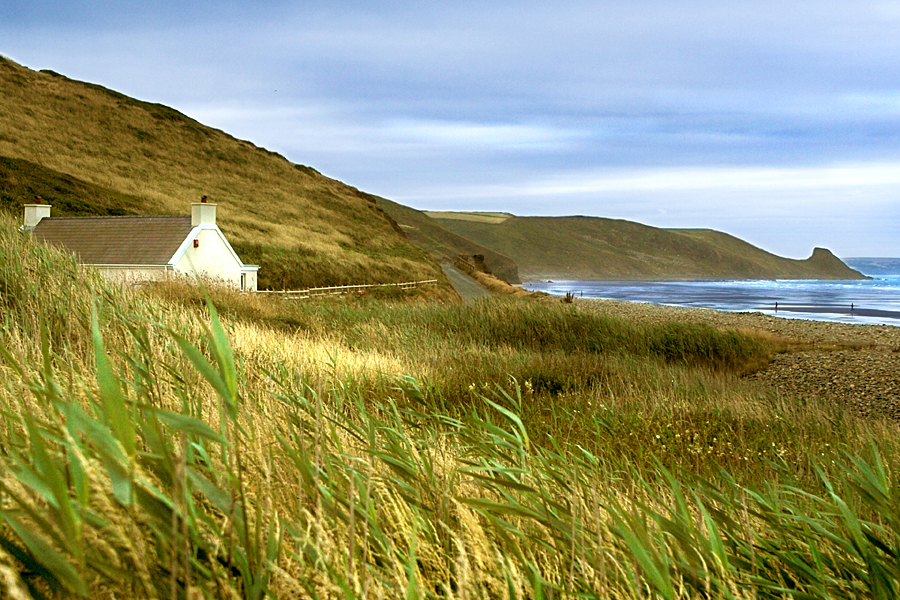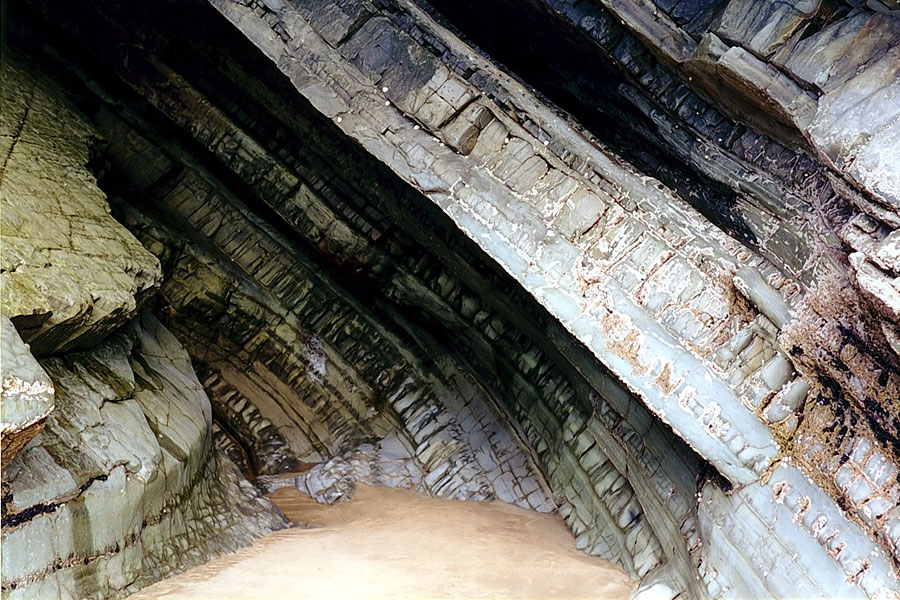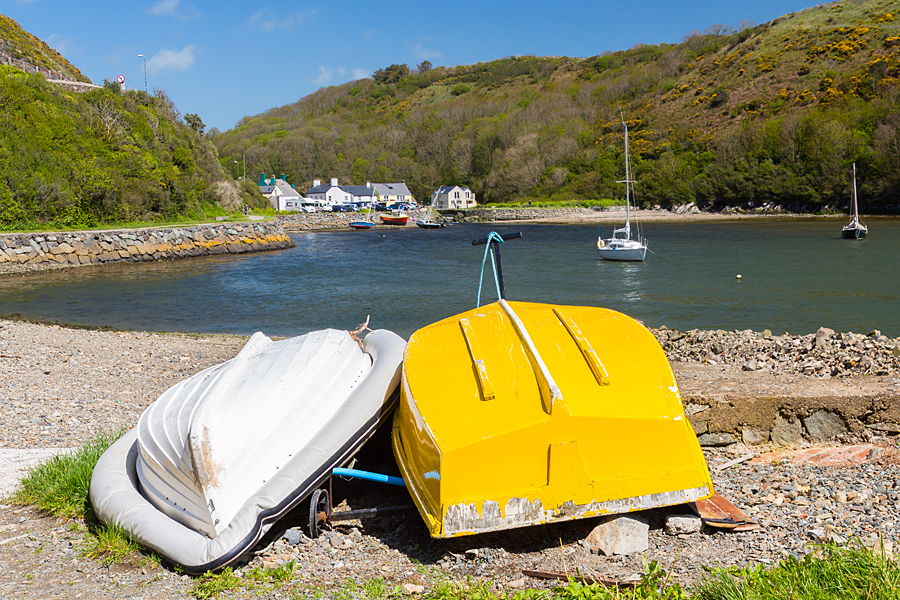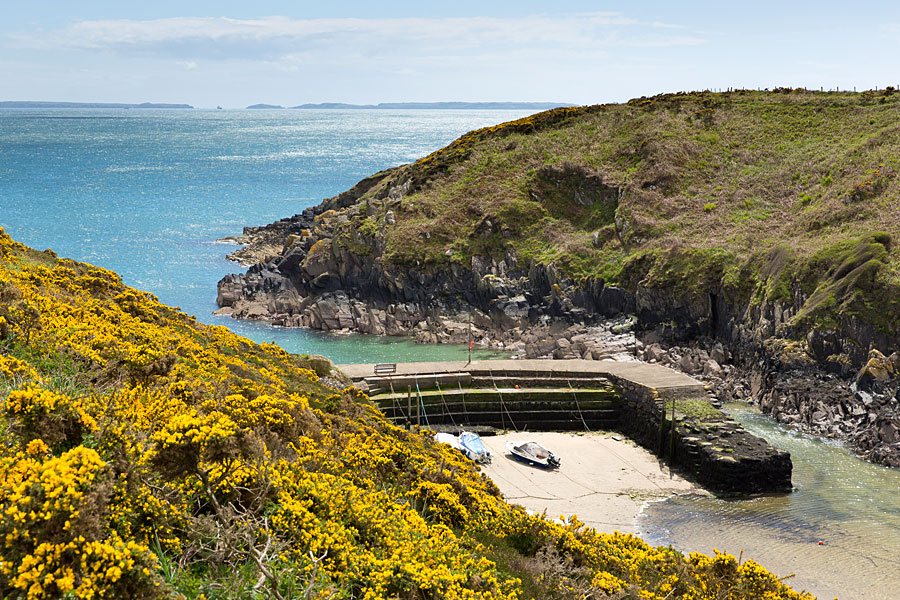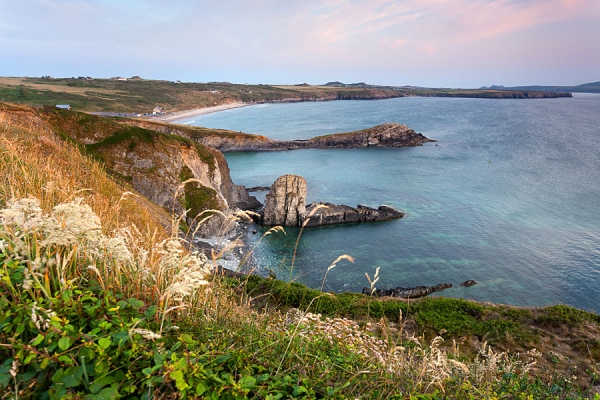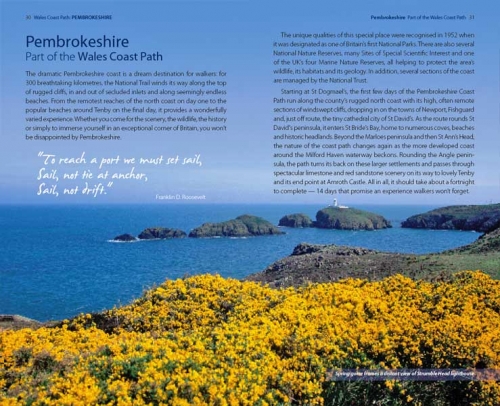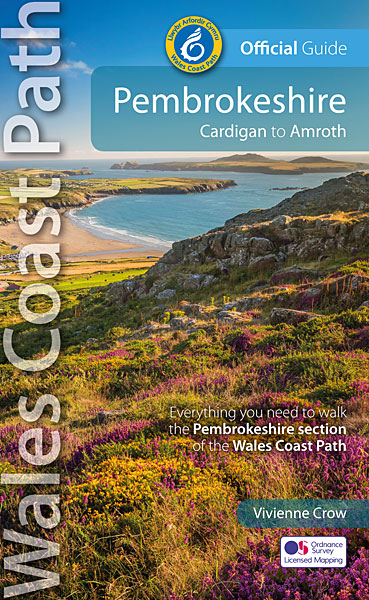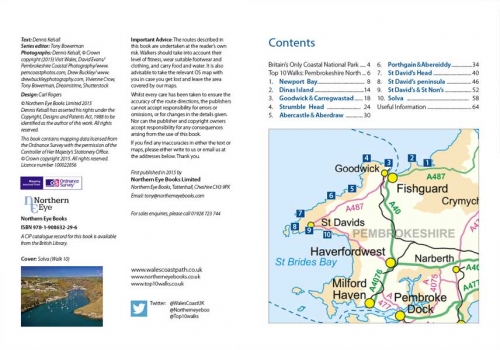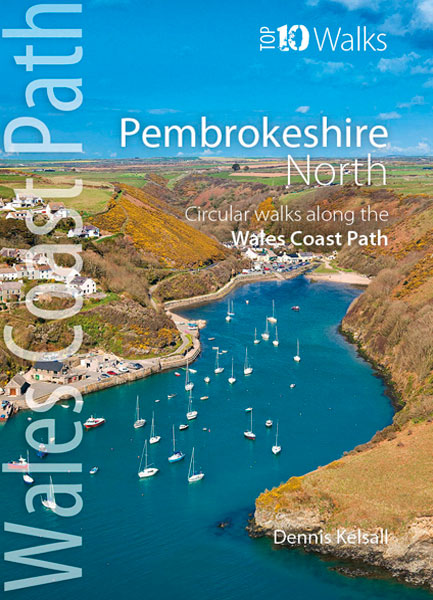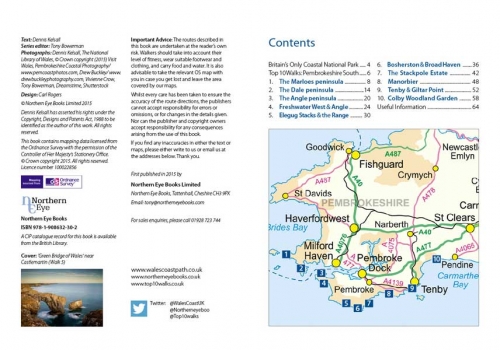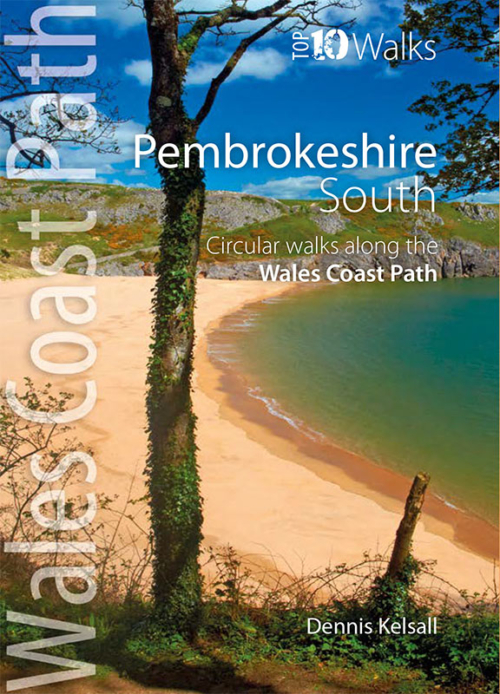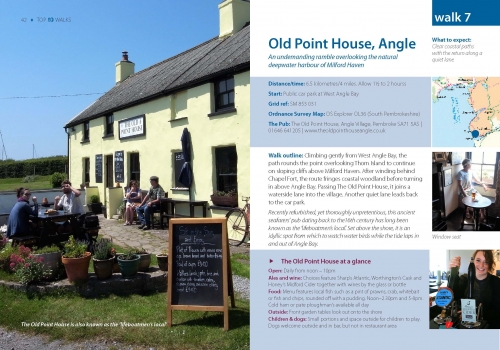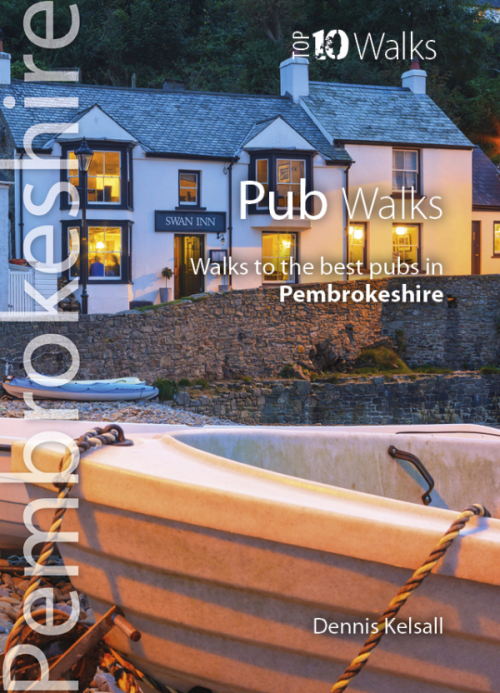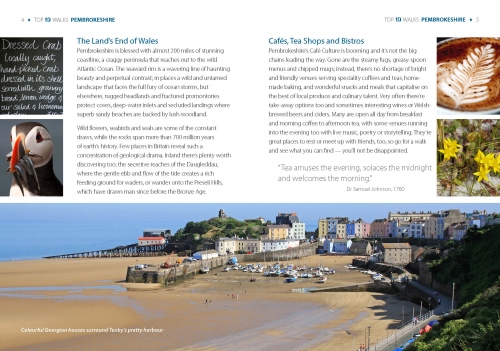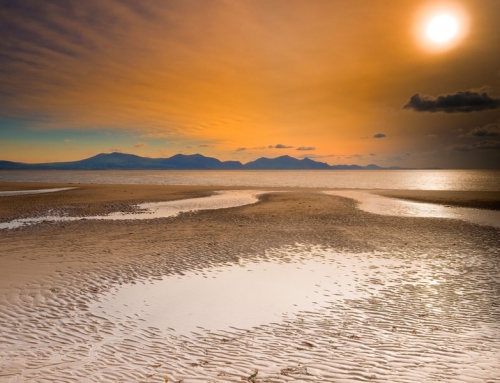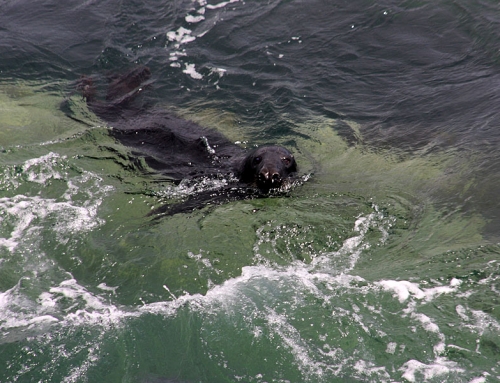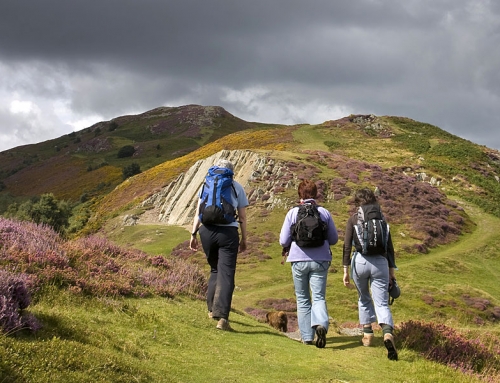St Davids Cathedral was built in a hollow to hide it from seaborne raiders
Fiona Barltrop celebrates the beauty of the Wales Coast Path/Pembrokeshire Coast Path around St Davids peninsula, Pembrokeshire
IN THE MIDDLE AGES, two pilgrimages to St Davids were said to be equal to one to Rome and three the equivalent of one to Jerusalem.
The majority of visitors today no doubt make the journey here on four wheels, whisked along the tarmac in a matter of hours. But even if it’s only a day’s walk, the best way to arrive at the great cathedral is on foot, along Pembrokeshire’s glorious section of the Wales Coast Path (which shares the route with the Pembrokeshire Coast Path). And the best time, is in the peace of the evening, the day-trippers long-gone.
Britain’s smallest city is no more than a village in size (my size city indeed), its cathedral and ruined Bishop’s Palace built in a hollow below the houses and shops so that only the cathedral’s tower is ever visible from any distance.
Britain’s smallest city
Britain’s smallest city is no more than a village in size (my size city indeed), its cathedral and ruined Bishop’s Palace built in a hollow below the houses and shops so that only the cathedral’s tower is ever visible from any distance. It’s a truly magnificent building, especially striking in the context of such a small settlement. Yet as if one great cathedral wasn’t enough, there’s also a Catholic Church and no fewer than four Chapels.
St Davids lies at the centre of a largely flat (apart from a few rocky outcrops), treeless, windswept peninsula, surrounded by an impressive coastline that attracts not only walkers but surfers, kayakers, climbers and coasteerers.
Coastal pilgrimage
Regular buses link it with Trefin in one direction and Newgale in the other, from both of which it’s a superb walk back along the Wales Coast Path (and Pembrokeshire Coast Path) to St Davids, providing a splendid couple of days’ ‘pilgrimages’. I’d done both once again earlier in the week, albeit a week of very grey gloomy weather that really didn’t do justice to this highly scenic coastline. But at last, for my final day, a good forecast was promised. It was a toss-up as to which stretch I’d re-walk, but the latter won by a whisker.
Newgale Sands is a fine spectacle – a two mile long beach pounded by Atlantic surf. Coming from Haverfordwest, it’s always my first sight of the Pembrokeshire coast after a 300 mile drive from south-east England – and it lifts the spirits every time. A couple of hours delightful walking – with views stretching across sparkling blue St Bride’s Bay to the Marloes peninsula and Skomer Island – brought me to Solva.
Coastal lime kilns
With its distinctive long sheltered harbour (the limekilns beside it are quite a common sight along this coast), it’s one of Pembrokeshire’s most attractive and popular villages; a tempting place to stop for some refreshment, but it was too early yet.
I pressed on to Caerbwdy and Caerfai Bays, an impressive Iron Age hill fort on the headland between; the purple sandstone used for the cathedral comes from these two bays.
Rocky coast
The next bay, St Non’s, is named after St David’s mother. David is said to have been born on the site of the ruined chapel here, in AD 462. Nearby is a ‘holy well’ famed for its healing powers, and a modern chapel and retreat. Further on, the narrow inlet of Porth Clais – like a smaller version of Solva – was once the harbour for St David’s and a busy trading port.
Beyond Porthlysgi Bay you round the headland at Pen Dal-aderyn from where there are good views of Ramsey Island (an RSPB nature reserve noted for its seals and seabirds) across the rushing waters of Ramsey Sound.
I considered leaving the coast at St Justinian’s (lifeboat station), but with just enough daylight to get me to Whitesands Bay decided to keep going. Sunsets here are beautiful if you’re lucky….
A couple of miles quiet road walking brought me back to St David’s via the cathedral, a well satisfied and thankful pilgrim.


